A True Local Gem in Gangnam: Kim Myungja’s Oyster Gukbap (김명자 굴국밥 강남점)
If you’re visiting Seoul and planning to explore the buzzing streets of Gangnam, chances are you’ll be overwhelmed with endless dining options. Trendy fusion spots, global chains, and Insta-worthy cafes are everywhere. But with so many various eateries lined up and taking over every street, how do you pick where to eat? Better yet, where do the locals eat? If you’re like the Seoul locals, craving something traditional and soul-warming, head into the hidden alleyways behind Gangnam Station for a true local gem.
Where do the Locals Really Eat?
Just a few minutes from Exit 5 of Gangnam Station, you’ll stumble upon a basement-level restaurant with a modest (and somewhat hidden) sign: Kim Myungja’s Oyster Gukbap. It’s easy to miss, but that’s part of the charm. Gangnam is a huge business district and the workers in this area know that the best restaurants are tucked away in non-assuming alleyways, far from the main shopping streets. Myungja’s is where local office workers go for a quick, comforting meal on their lunch breaks.
What is Gukbap?
Gukbap (국밥) is a traditional Korean dish that literally translates to “soup rice.” It’s a hot soup dish made up of a hearty broth, rice, and various inclusions. At Myungja’s, those inclusions are oysters. Their oyster gukbap is served boiling hot in a traditional stone bowl, topped with garlic chives and a raw egg that cooks in the soup. Every spoonful is a comforting bite of plump oysters, savory broth, and perfectly cooked rice.
How to Get There
In typical city fashion, businesses are stacked on top of each other in buildings you would never expect a cosmetic store and restaurant to be in together. When you get off Exit 5 of Gangnam Station, you’ll head down the block, turn into the first block, and go straight until you get to Myungja’s. Once you arrive, they’ll have an area for you to take off and store your shoes. Do not step foot into the establishment without having taken your shoes off first. If you need slippers, they have those for you. Taking shoes off when entering a home is the standard in Korean culture so you might find it odd that a restaurant is asking the same, but don’t worry, this is normal and ensures that the restaurant floors won’t be dirtied to maintain hygiene.
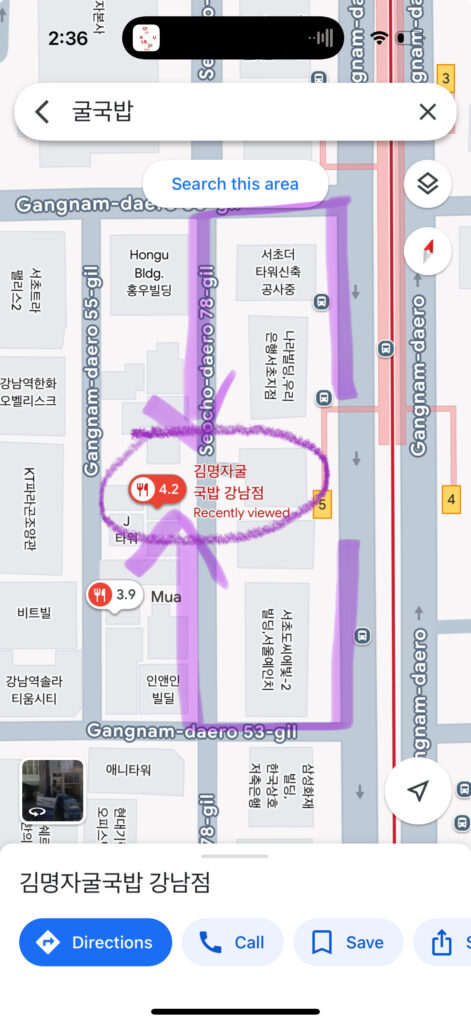
What to Order
Oyster Gukbap: Their speciality. Fresh oysters in soup with rice.
Oyster Jeon: Pan-fried oyster pancakes with crispy edges and a tangy dipping sauce.
Mandu (Dumplings): A great oyster-free option. Freshly steamed dumplings with a juicy pork & veggie filling.
As is their speciality, I suggest you get their classic oyster gukbap with a plate of fried oyster pancakes on the side to share. That’s what I get every time I go to Myungja’s, and they’ve never failed me.
Before you get your food, you’ll be given some classic banchan–or side dishes– that are necessary to have with gukbap. They keep it simple with kimchi (spicy fermented cabbage), kkakdugi (spicy fermented radish), and seasoned garlic chives. Gukbap is always accompanied with kimchi and similar banchans to compliment the brothy, clean flavors of the soup with spicy, savory sides. When it comes to the gukbap, it comes out steaming hot in a traditional stone bowl to retain heat. Korean people need their soup piping hot or it’s not good enough. The gukbap will be garnished with garlic chives, but my favorite way to eat gukbap is with the chives covering the whole bowl. There’s also a raw egg that comes on top that you can leave to poach (the soup is so hot it’ll poach it), or break apart to enjoy stringy bits of egg in your soup similar to an egg-drop soup. And of course, the gukbap is full of fresh oysters to enjoy with every steaming hot bite.
You can’t forget about the oyster pancakes we ordered earlier, can we? Called oyster jeon in Korean, jeon is a Korean “pancake” dish made from covering fillings with a flour and egg batter that then gets pan fried. The oysters in the oyster jeon are fatty, soft, and unbelievably HUGE. Dip in the tangy ponzu sauce they provide for the perfect, slightly salty, umami, and buttery bite. Too many oysters for one sitting? I recommend their mandu if you’re looking for a non-oyster option. Myungja’s dumplings come freshly steamed with a pork and veggie filling. They’re soft, and the dumpling skin melts in your mouth, leaving a subtle, yet delicious meaty and earthy flavor from the filling.
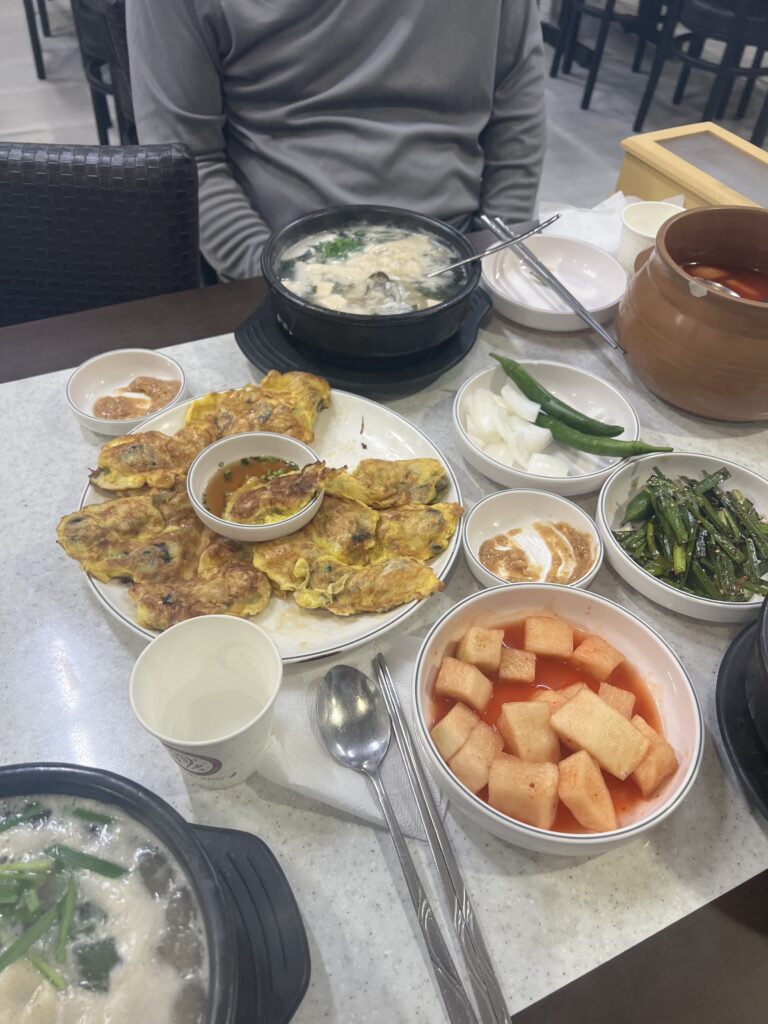
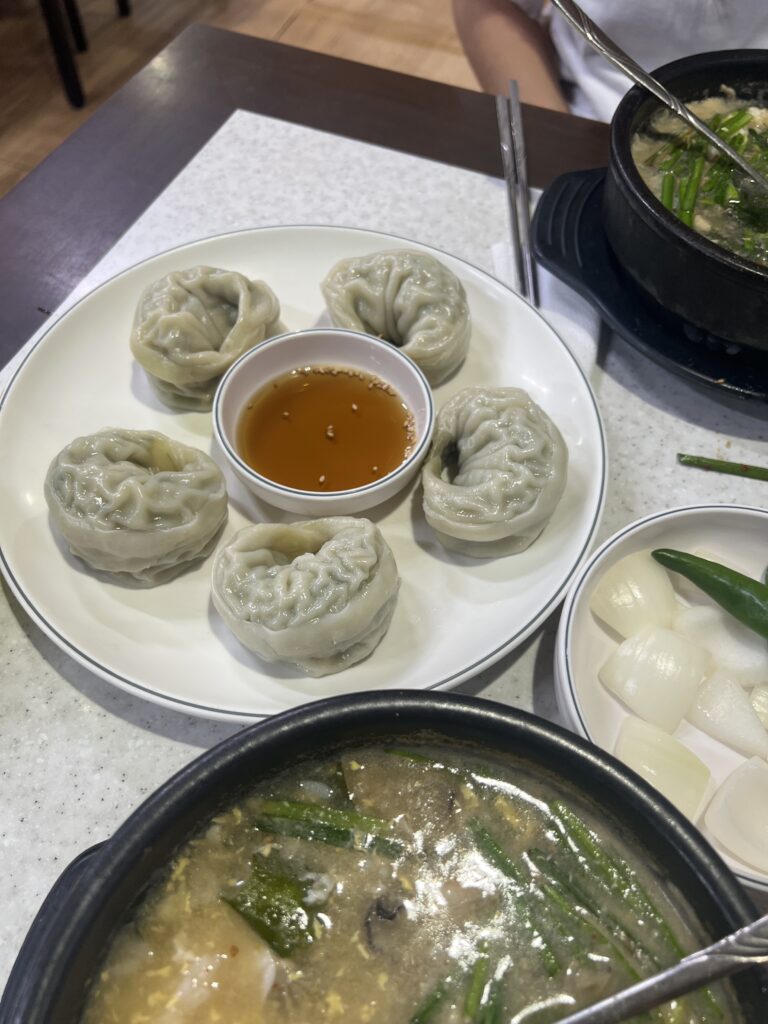
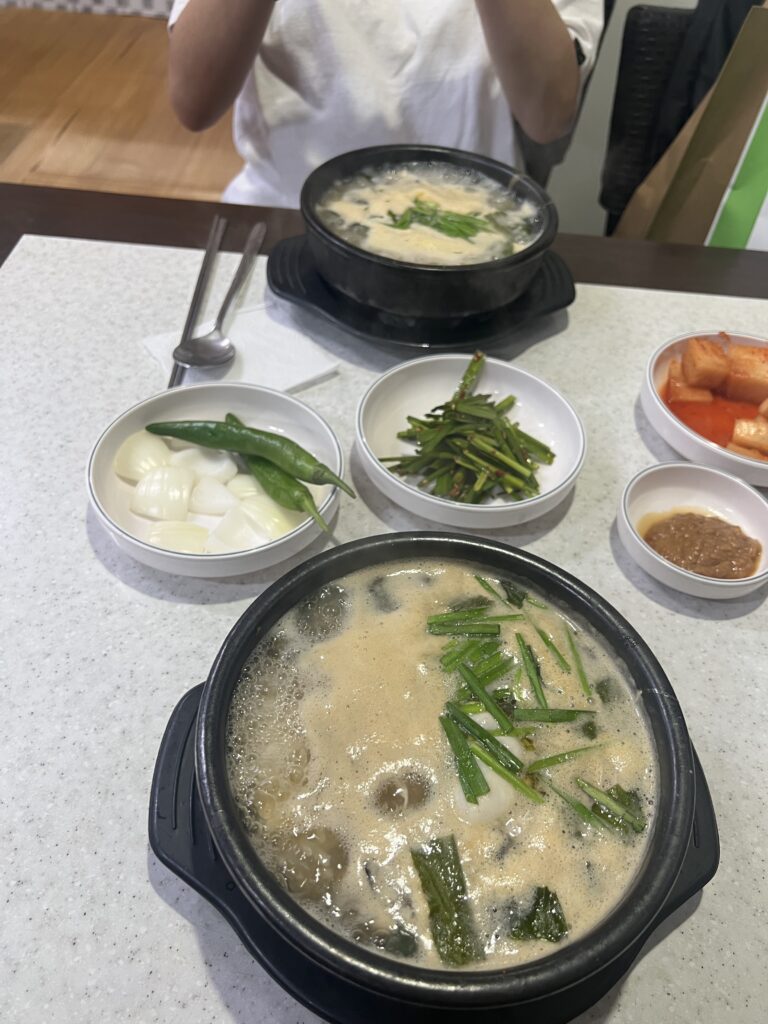
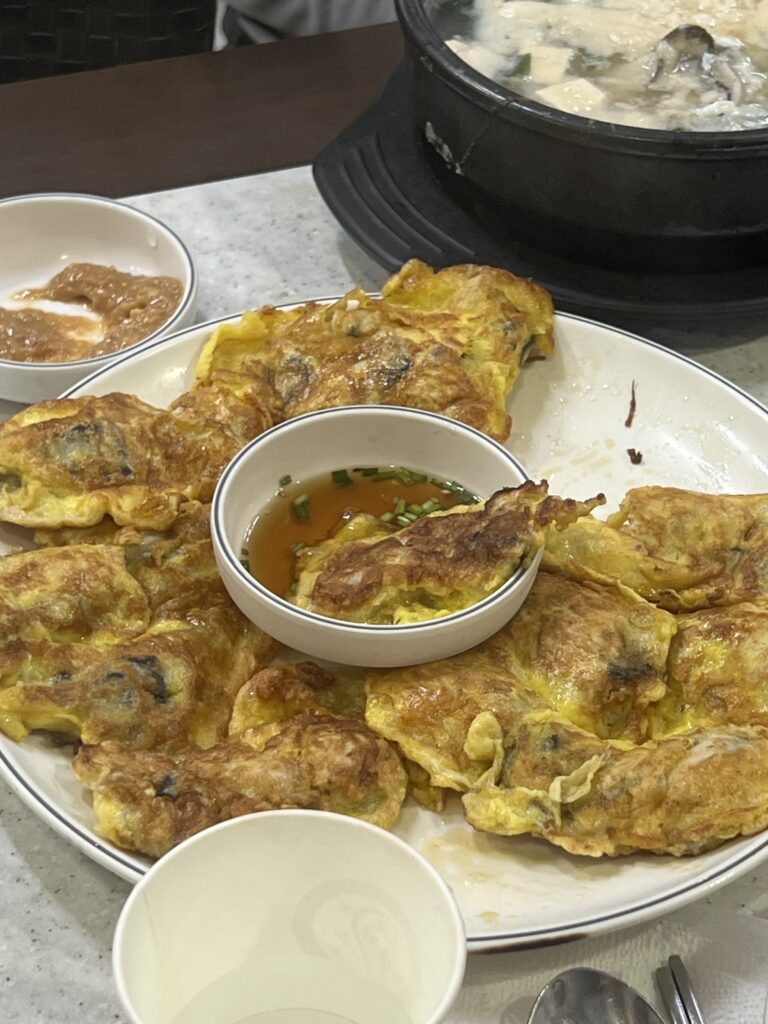
Why Myungja’s?
Gukbap is one of Korea’s staple traditional foods, and Myungja’s does it right. Remove yourself from the busy outside life of the bustling Gangnam streets and take to a small, hole-in-the-wall establishment that will serve you the most comforting meal in less than five minutes. Grab yourself a drink from their selection of Korean beers and soju to truly experience the Korean local meal. The soup is fresh, rich, savory, hearty, and hits all the right spots. The oysters are plump, meaty, and compliment the broth perfectly, adding a slightly umami flavor profile to the broth. Add on a piece of kimchi or radish with each bite, and you’ve got the perfect combination of flavors that’ll make for one of your most hearty, comforting meals in Korea.
I love eating at Myungja’s every time I go to Korea. With its simple interior, small menu, and homey atmosphere, Myungja’s feels like a secret escape from the fast pace of Gangnam. If you’re looking for something authentic, this place hits the spot.
It’s easy to get absorbed in the several food options the city offers you. Don’t miss Kim Myungja’s Oyster Gukbap in Gangnam if you want to eat like the locals and experience Korea’s comfort food culture.
We got traditional in Korea, but check out my fine dining experience in Singapore!
